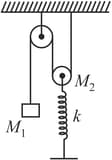Force and Energy Method in SHM
Force and Energy Method in SHM: Overview
This topic covers concepts, such as Angular Frequency by Force Method, and Angular Frequency by Energy Method.
Important Questions on Force and Energy Method in SHM
The potential energy of a particle of mass free to move along axis has the form , where and are positive constant and is -coordinate of the particle. The time period of SHM (along -axis) of small amplitude around mean position is . Find the value of .
A cone with half the density of water is floating in water as shown in figure. It is depressed down by a small distance and released. The frequency of simple harmonic oscillations of the cone is
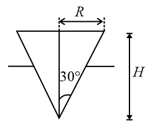
In the arrangement shown in figure, pulleys are small, light and frictionless and springs are ideal. and are the spring constants. The period of small vertical oscillations of block of mass is
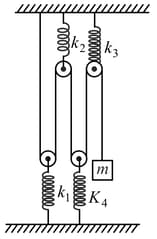
The bob of a pendulum is attached to a horizontal spring of spring constant . The pendulum will undergo simple harmonic motion with period
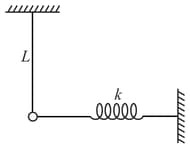
Cotyledons are also called-
A cylinder of mass and radius lies on a plank of mass as shown. The surface between plank and ground is smooth, and between cylinder and plank is rough. Assuming no slipping between cylinder and plank, the time period of oscillations (when displaced from equilibrium) of the system is

Find the period of low amplitude vertical vibrations of the system shown The mass of the block is m. The pulley hangs from the ceiling on a spring with a force constant k. The block hangs from an ideal spring.
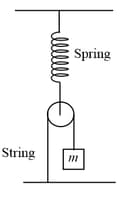
A particle of mass 5 x 10-5 kg is placed at the lowest point of a smooth parabola having the equation x2 = 40y (x, y in cm). If it is displaced slightly and it moves such that it is constrained to move along the parabola, the angular frequency of oscillation will be, approximately
A block of mass is constrained to move along with a moveable pulley of mass which is connected to a spring of force constant , as shown in the figure. If the mass of the fixed pulley is negligible and friction is absent everywhere, then the period of small oscillations of the system is
